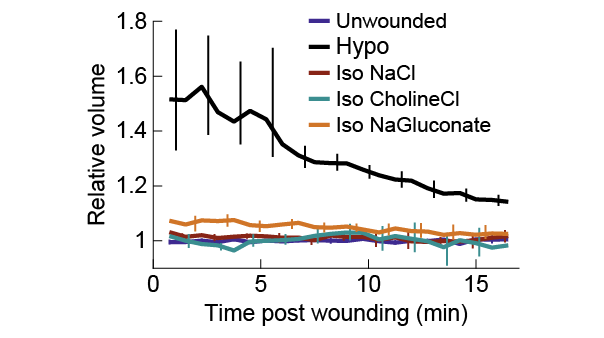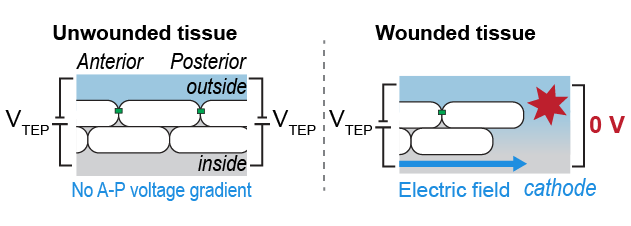Main question: how do skin cells know when (and where) injury has occurred nearby?
A 🧵 about how #zebrafish embryos sense wounds via osmotic AND electric cues, with plenty of cool movies! (1/12)
biorxiv.org/content/10.110…
(Most movies in this 🧵 are of LifeAct-GFP in the basal cell layer of the embryonic tailfin, reacting to a wound to the right.) (2/12)
I was initially studying what caused cells to STOP moving after injury, and I used this trick to control their response. (4/12)
E.g. in isotonic CholineCl or NaGluconate, cells still reorganized their actin cytoskeletons, while practically nothing happened in isotonic NaCl. (5/12)
I hope this work encourages others to use #zebrafish as an in-vivo system for further discovery! (end/12)







